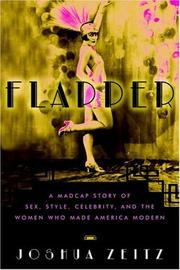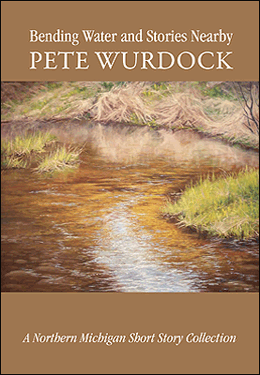"Like the fragrant palm groves and sunny tropic lands where it grows, Baker's Coconut has a rare sweetness, an inviting, delicious glamor, to add to every dish."This sweet booklet with its pastel pics is full of lovely recipes for Baker's Coconut, Southern Style "fresh-grated coconut, slightly sweetened and packed, without coconut milk, in air-tight tin" and for Baker's Coconut, Premium Shred, "sugar cured-finely shredded coconut, put up in a triple-sealed, moisture-proof package that keeps it fresh."
Some have many steps and use old fashioned kitchen tools, like hand rotary egg beaters. I have a hand rotary beater in my kitchen that Mom used in the early 1960s.
Coconut Fudge Cake
2 cups sifted Swans Down Cake Flour
2 teaspoons baking powder
1/2 teaspoon salt
1/2 cup butter or other shortening
1 cup coconut
2 squares Baker's Unsweetened Chocolate, melted
1 egg, well beaten
1 teaspoon vanilla
3/4 cup milk
Sift flour once, measure, add baking powder and salt, and sift together three times. Cream butter thoroughly, add sugar gradually, and cream together until light and fluffy. Add chocolate, blend; then add egg and vanilla. Add flour, alternately with milk, a small amount at a time. Beat after each addition until smooth. Bake in greased pan, 8 x 8 x 2 inches, in moderate oven (325 degrees F) 1 hour. Spread with Coconut Marshmallow Frosting.
Coconut Marshmallow Frosting
Add 1 cup marshmallows, quartered, to Seven Minute Frosting. Spread on cake. Sprinkle 1 can Baker's Coconut, Southern Style, over cake while frosting is still soft. Makes enough frosting to cover tops and sides of two 9-inch layers.
Seven Minute Frosting
2 egg whites, unbeaten
1 1/2 cups sugar
3 tablespoons cold water
1 1/2 teaspoons light corn syrup
1 teaspoon vanilla
Put egg whites, sugar, water and corn syrup in upper part of double boiler. Beat with rotary egg beater until thoroughly mixed. Place over rapidly boiling water, beat constantly with rotary egg beater, and cook and beat until thick enough to spread. Makes enough frosting to cover tops and sides of two 9-inch layers.
Here is an easy recipe to try!
Coconut Salad Delicious
2 cups cabbage, finely shredded
1 cup grated pineapple, drained
1 cup Baker's Coconut, Premium Shred
3/4 cup Hellmann's Mayonnaise
dash of salt
Imperial Tutti-frutti Cake
2 2/3 cups sifted Swan's Down Cake Flour
2 1/4 teaspoons baking powder
1/2 cup butter or other shortening
2/3 cup milk
1/3 cup water
1/2 teaspoon vanilla
1/4 teaspoon almond extract
1/4 teaspoon salt
3 egg whites
Sift flour once, measure, add baking powder, and sift together three times. Cream butter thoroughly, add sugar gradually and cream together until light and fluffy. Combine milk, water, and flavoring. Add flour to creamed mixture, alternately with liquid, a small amount at a time, and mix after each addition until smooth. Add salt to egg whites and beat until stiff, but not dry. Fold gently into cake mixture. Bake in two greased 9-inch layer pans in slow oven (300 degrees F) for 10 minutes; then increase heat to moderate (374 degrees F) and bake 15 minutes longer. Put layers together and cover top and sides of cake with California Tutti-frutti Frosting and Filing or frost with Coconut Seven Minute Frosting.
California Tutti-frutti Frosting
2 egg whites, unbeaten
1 1/2 cups sugar
3 tablespoons water
2 tablespoons lemon juice
dash of salt
grated rind of 1/2 lemon
1/4 teaspoon almond extract
3/4 cup walnut meats, toasted and coarsely broken
1/2 cup currants
8 maraschino cherries, finely cut
1 can Baker's Coconut, Southern Style
Put egg whites, sugar, water, lemon juice, and salt in upper part of double boiler. Beat with rotary egg beater until thoroughly mixed. Place over rapidly boiling water, beat constantly with rotary egg beater, and cook 7 minutes or until frosting will stand in peaks. Remove from fire, add lemon rind and almond extract. To 1/3 mixture, add nuts, currants, and cherries. Spread between layers of cake. Cover top and sides with remaining frosting and sprinkle thickly with coconut. Makes enough frosting and filing for tops and sides of two 9-inch layers.
Coconut Brambles
2 cups sifted Swan's Down Cake Flour
1 teaspoon salt
1 cup sugar
1 cup cream
2 tablespoons milk
2 teaspoons baking powder
4 egg whites
1 teaspoon vanilla
1/4 teaspoon almond extract
1 cup blackberry jelly
Baker's Coconut, Southern Style
Sift flour once measure, add salt and 1/2 cup sugar, and sift again. Add cream, milk, and baking powder to egg whites, and beat with rotary egg mixer until mixture thickens; then add flavoring and remaining sugar. Fold in flour gently. Bake in two greased pans, 8 x 8 x 2 inches, in moderate oven (325 degrees F) 25 minutes or until done. Cook. Put layers together with blackberry jelly. Cut into 2-inch squares or diamond-shaped pieces, cover with Seven Minute Frosting and sprinkle with coconut. Makes 25.
Stuffed Prune Salad
2 packages cream cheese
1/2 can Baker's Coconut, Southern Style
2 tablespoons Hellmann's Mayonnaise
24 cooked prunes, seeded
Blend cheese, coconut and mayonnaise. Stuff prunes with mixture. Serve on crisp lettuce. Garnish with additional mayonnaise. Serves 8.
Yum!
Here is a history of Baker's Coconut founded in 1894 in Philadelphia by Franklin Baker:
http://www.franklinbaker.com/about-us/history.html
Here's a nice blog post on the history of the rotary beater at Cake, Oil and the Kitchen.































